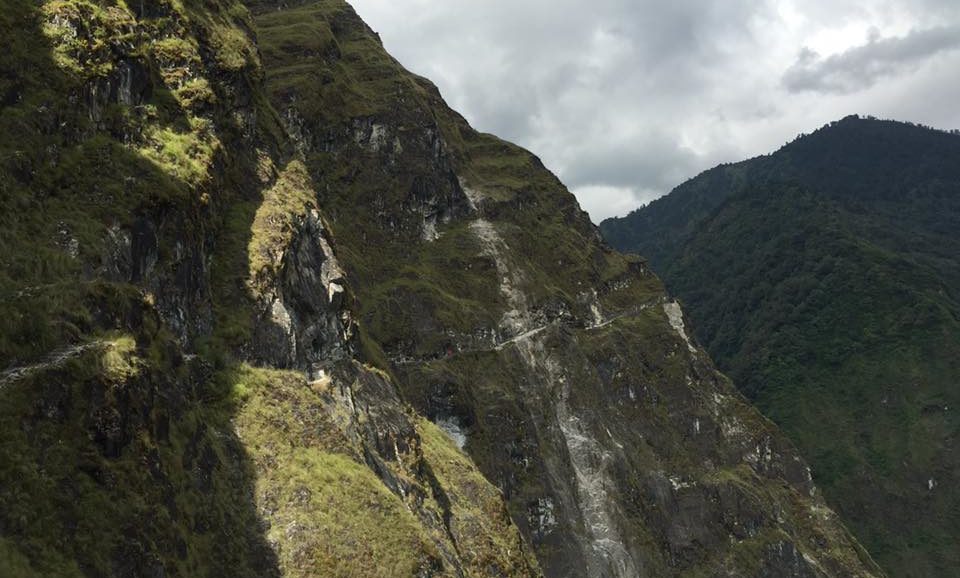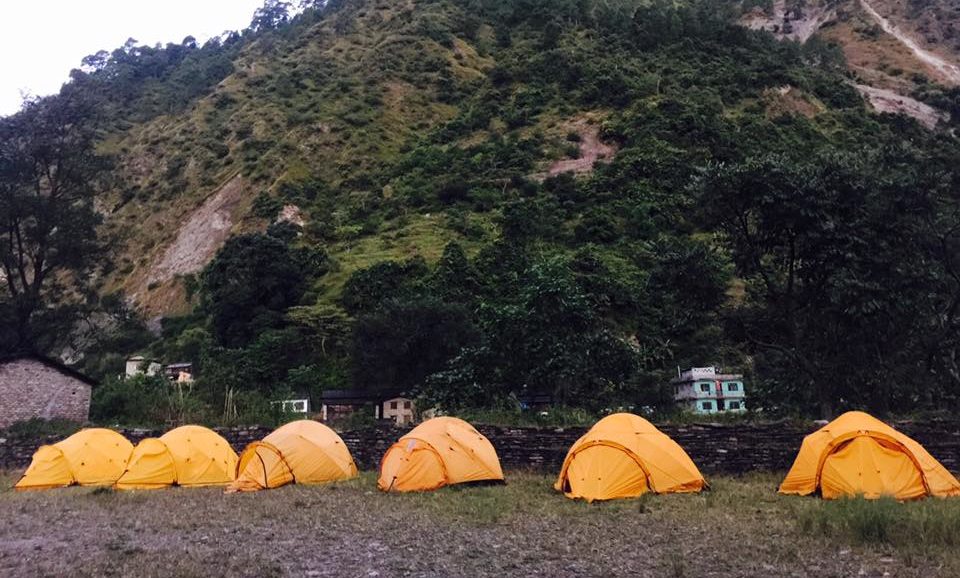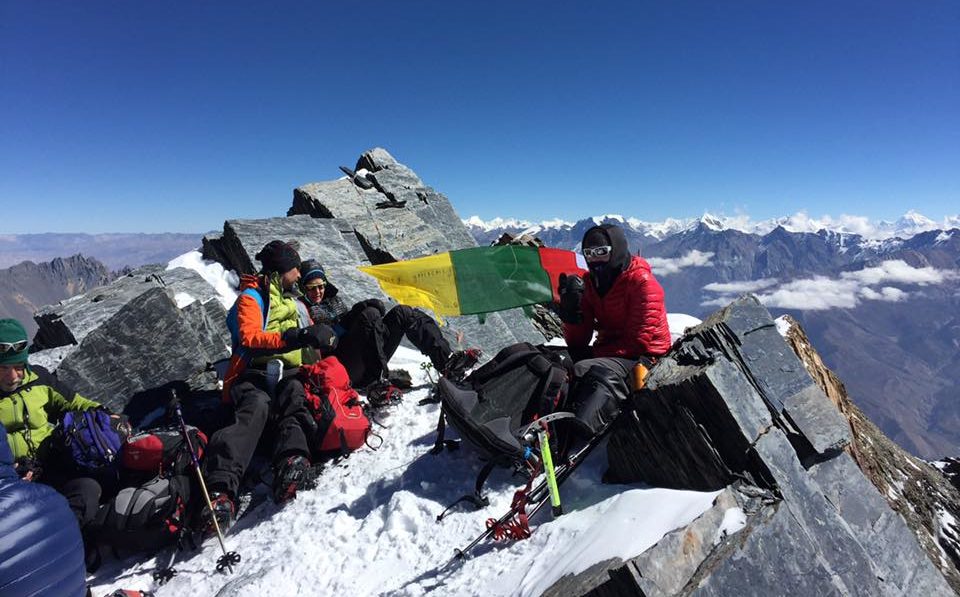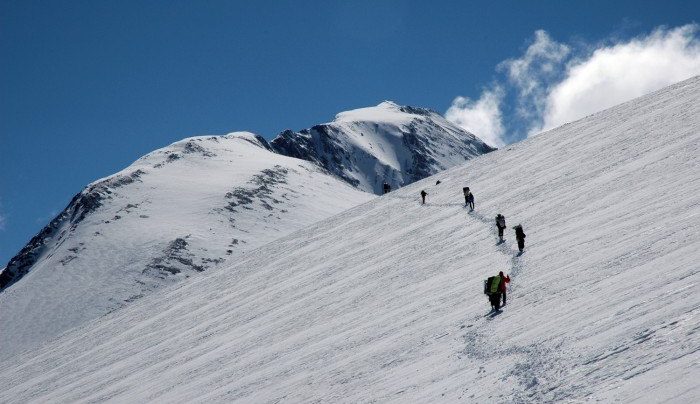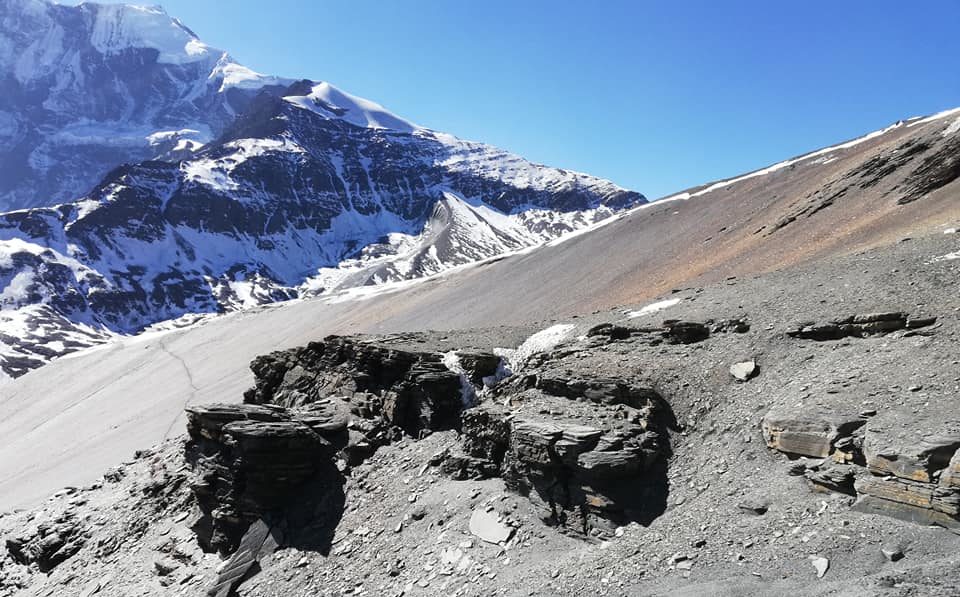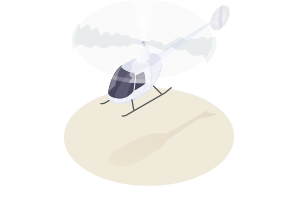Dhaulagiri Base Camp Trekking this is a long and strenuous trekking to the base camp of Mt. Dhaulagiri at (8,167 m) 26,794ft. One of the 7th highest mountain peaks in the world’s Himalayan peak. Separated from the Annapurna region by the Kali Gandaki, the Mt. Dhaulagiri massif includes more than 33 peaks over 6000 meters, eight of these surpassing 8000 meters. Topographically, Dhaulagiri region is a land of dramatic contrast with many varieties of Nepal’s natural beauty and cultural diversity. While trekking to this remote and wild region, you will explore the world’s deepest river gorge, unparalleled Himalayan Mountain scenery and culture of some interesting indigenous peoples. You will walk through the rivers upstream, ferns and forests of oak and other deciduous trees and juniper. Mountain sides of rhododendron ablaze with red color in the spring, and other flowers are abundant on the trail. Even on High Mountain passes above the tree line, tiny alpine flowers can be found dotting the windswept ground. This is truly an adventure journey and is ideal for those that thrive on rugged and remote trails that see only a handful of trekkers each season.
Trekking to Dhaulagiri Base Camp from Beni we head north-westerly direction towards the villages of Babichour, Dorbang and Darapani to Muri keeping to the banks of the Myagdi Khola which goes into the very center of the Mt. Dhaulagiri massif lots of enjoying the first views of the impressive eastern wall of the mountain. Once we reach the Mt. Dhaulagiri Base Camp we will see the gigantic northern wall as well as the Mt. Dhaulagiri, I, III and IV starting through the French Pass (5,360 m) and ending in the valley of Kali Gandaki, Marpha village and Tukuche village (Lower Mustang) is one of the most popular and beautiful villages. Where you can see the big Apples garden and beautiful Monasteries, Stupas (Chortens) and Mani wall up to Kali Gandaki valley, the deepest gorge in the world and finally the trail emerges into wide valley of Tatopani village (1,190) via Khobang village (2,560 m), Larjung village (2,550 m), Kalopani village (2,530 m), Ghasa village (2,010 m) The Tatopani village (1,190) is most popular for the (Natural Hot Spring). Where you will lots of enjoys with hot bath by (Natural Hot Spring) and takes natural hot bath. Then, we will continue our walk through Ghorepani Village (2,750 m) via Sikha village (1,935 m), Chitre village (2,390 m).
Dhaulagiri Base Camp Trekking also you will reach to Ghorepani (2,750 m)–Poon Hill (3,210 m) where you can see the best views around every corner during the trek soaring Himalayan peaks such as Mt. Dhaulagiri (8,167 m), Mt. Annapurna I (8,091 m), Mt. Machapurhre (Fish Tail) (6,993 m), Mt. Nilgiri (6,940 m), Mt. Hiunchuli (6,441 m), Mt. Annapurna South (7219 m), Mt. Lamjung Himal (6,931 m), Tukuche Peak (6,920 m), and some other many smaller peaks during the trip. From Poon Hill (3,210 m) we can see the best view of sunrise and Himalayan mountain range early in the morning. After Ghorepani (2,750 m), Poon Hill (3,210 m) our trek continue to Tadapani (2,590 m) via Deurali (2,990 m) and Banthanti (2,520 m) the trail leads us through beautiful sub tropical valleys, with many trees forests of rhododendron and icy waterfalls.
Ghandruk village (1,940 m) is one of the most popular villages where you will also encounter same Gurung’s ethnic community. This village is situated on the ridge of hill from where you can enjoy the spectacular view of Annapurna Himalayan range, Fishtail and green valley of Pokhara. Long closed to visitors for a variety of reasons – including its remoteness, the region west and north of Dhaulagiri was opened to trekkers traveling only in organized camping groups. The trek ends with a steep descent to Marpha and return to Pokhara, either via the Kali Gandaki valley or over the Ghorepani ridge for a panoramic view of the entire Dhaulagiri massif.


